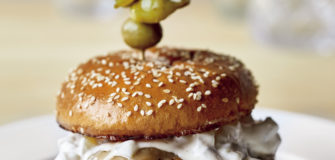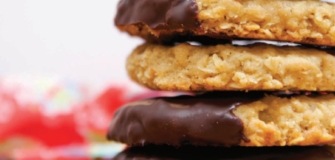Share
Hey Canada, we’re turning 20 this year!
We’ve spent two decades documenting and celebrating this country’s best culinary writing. The changes in how we cook, talk, and write about food over the past 20 years has been phenomenal. But we don’t have to tell you about it, head on over to our Instagram account, where we’re posting the winners from the last twenty years — or even just to see what the cookbooks from 1998 looked like!
To help celebrate our 20 years, we reached out to three Canadian “book experts” to hear how this country’s culinary writing has changed most dramatically for them. We spoke to:
- Karen Anderson – self published author and previous Taste Canada Silver Award Winner (for her co-authored book, A Spicy Touch) to get her perspective as an author.
- Andrea Magyar – Publishing Director of Penguin Canada, for the publisher’s point-of-view (and the publisher of many Taste Canada Award winners over the years).
- Bob Newland – owner of Fanfare Books, an independent bookstore which has been thriving in downtown Stratford, Ontario since 1967.
Here’s what they consider to be the five most prominent changes:
Social and self-promotion
“Social media has provided an amazing space for new and experienced food writers to engage with readers in a personal and unique way that is bound to continue evolving,” said Magyar. As first the internet and now social media have exploded, authors are building up their own personal following and loyalty, even apart from their cookbooks, so the public is eager and waiting for their next release. On top of that, even the publishers are getting in on the incredible reach they can have on social media to promote new and upcoming cookbooks. If you don’t follow any Canadian publishers, you should!
From general to niche
As taste and trends change and grow, there has been a shift towards more focused cooking topics. Whether it’s dietary (vegan, gluten-free, paleo), regional (The Prairies, The West Coast, The Maritimes), or ingredient (beer, bacon, kale), you can find a cookbook now on almost every subject. “I probably sell more memoirs or essay [collections] than I do recipe books now,” said Newland. Which leads us to the third big change.
The rise of the recipe backstory
Cookbooks have become less about the recipe and more about the recipe maker. As great as the food might be, we want to get to know the person behind the page, and have the feeling that they are sharing the recipe with us like they would if they were standing in our own kitchen. The strength of the author’s voice is something Magyar has seen all along. “[It’s] an essential element to a successful book that not only draws a reader in, but also informs, instructs, and entertains.” But what has changed is how much emphasis the author’s stories get now. And it’s making our culinary writing that much more rich with history and cultural observations.
Food photography
If you opened a cookbook from 1997, you would find mostly recipes, with a few photos of the food in question. Open a cookbook today, and you will find page after page of beautiful, intricate, and expertly framed, focused, and edited food photography… plus some recipes. “The need for food styling and photography has also increased from the Joy of Cooking with only text and a few line drawings, to books like Ottolenghi with stunning full-page photos for each recipe,” said Anderson.
The rise of the restaurateur
Twenty years ago, you would hardly know what restaurants existed on the other side of the country, but now you are able to discover and learn about new restaurants and their superstar chefs. These chefs can have such a big following that they can put out their own cookbooks, sometimes with the restaurant, sometimes on their own. “Tastes are becoming increasingly rarified,” said Newland. Either way, the results are delicious!
Here’s to another 20 years, and whatever changes they will bring. If you’ve enjoyed hearing about how food writing has changed, we think you’ll like the series we’re doing on our Instagram account, highlighting all the winning cookbooks. It’s a walk down memory lane, and we hope you enjoy it!

About the Author
Tim Peckover
Account Executive at Clearpath Robotics
Tim Peckover is a marketer and tech geek who truly loves food, especially if it involves coffee or cheese.







